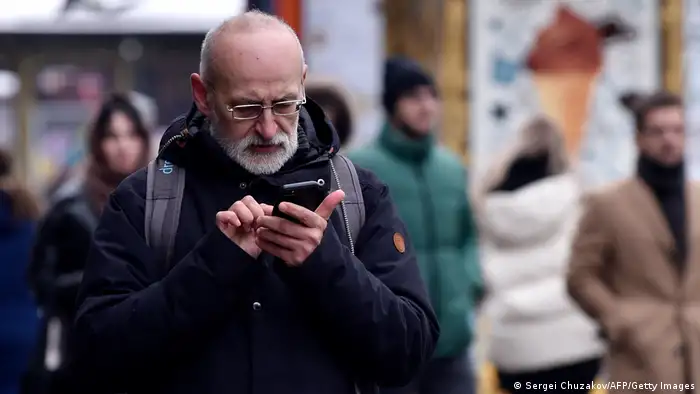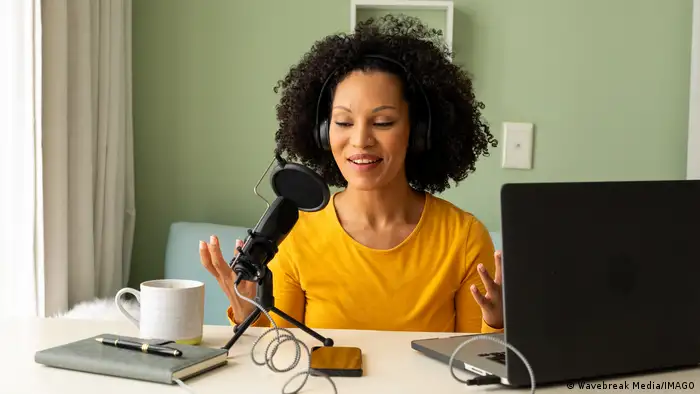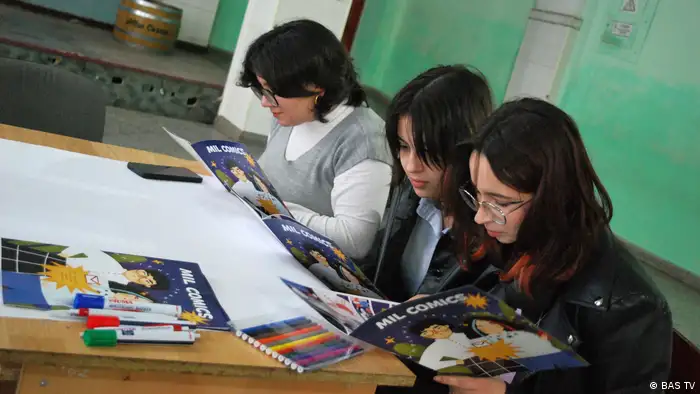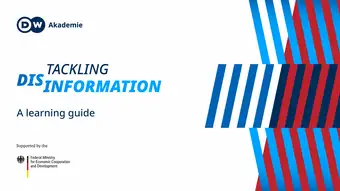Tackling disinformation: A learning guide
How media and information literacy can fight disinformation
Media and information literacy is often proposed as a way to combating disinformation. Here's an overview of what you need to know about MIL, and how it can help fight disinformation.
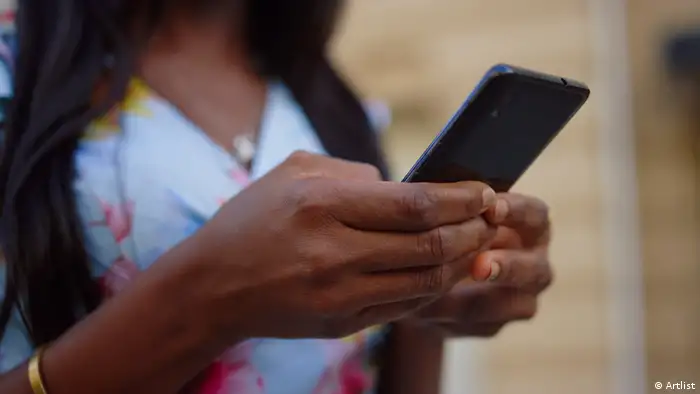
Media and information literacy can make people more resilient against multiple threats, including disinformation
Disinformation can have real life consequences — from sparking riots to causing deaths — when media consumers base their actions on false assumptions about reality.
Media and information literacy, or MIL, is one solution to preventing this.
What is media and information literacy?
MIL refers to the ability to critically and responsibly use, engage with and create media and information in a variety of contexts. MIL approaches can raise people's resilience against multiple threats, including mis-, dis- and malinformation. MIL is primarily a demand-side solution in that it targets content users, as opposed to producers, of disinformation.
Who benefits from MIL interventions?
MIL activities are often aimed at younger age groups (see a UNESCO suggestion for school curricula here) but older people benefit, too. In essence, media literacy interventions are valuable for all citizens in danger of falling prey to disinformation.
The approach, however, isn't aimed at communication professionals such as journalists, public relations officers and others who deal with media and information on a daily basis.
What does MIL aim to achieve?
MIL measures aim to improve knowledge, attitudes and behavior around mass media and online communication. They address critical and responsible conduct in three potential roles that citizens can play as:
- producers of disinformation
- relayers / sharers of disinformation
- consumers of disinformation.
Being media and information literate means that people strive to refrain from producing, sharing or falling for misleading or false information. Since most people are rarely engaged in producing malicious content, MIL is more strongly focused on roles 2 and 3.
What concrete skills do MIL activities aim to foster?
The main outcome is a critical attitude toward media and information sources, as captured in the five core questions suggested by the Center for Media Literacy.
- Who created this message?
- What creative techniques are used to attract my attention?
- How might different people understand this message differently from me?
- What lifestyles, values and points of view are represented in, or omitted from, this message?
- Why is this message being sent?
This is just one of many MIL models with diverse definitions of acquired skills. DW Akademie, for example, has developed a model with five dimensions:
- access
- analysis
- reflection
- creation
- action.
Disinformation can be dealt with in each of these fields, for example:
- how to access reliable information sources
- how to analyze motivations behind disinformation
- how to reflect what information one shares on social media
- how to responsibly create your own messages
- how to act when people you know or network with share dubious information.
Is MIL the same as media literacy, information literacy or digital literacy?
There are many terms related to MIL. Some organizations use the expressions "media literacy," while others use "information literacy" or "digital literacy" (for more on these terms, see here). Though these definitions have individual nuances, the common thread is empowering people to confidently master the challenges that various media or information sources pose (read more on the basic tenets of MIL here).
Participants of MIL interventions are invited to consciously think about the production, distribution and consumption processes associated with (dis)information.
What are some MIL approaches?
MIL capacities, specifically skills that help enhance resilience against disinformation, can be boosted in many ways.
Training: The classic approach is to develop people's MIL capacities through workshops. These normally convey 1) the basics of how media and online communication function, 2) enable people to analyze different types of disinformation, and 3) reflect on how they encounter and come to terms with these kinds of communication. There are many useful guidebooks, such as this one from DW Akademie that can help structure such training.
Awareness campaigns: Online and/or offline campaigns are another way to raise awareness of the issues around disinformation. The key to success here is to tailor the content to the interests and needs of the target group, for example, using comic type content for young people. One inspirational organization that engages in frequent public communication on topics such as disinformation and hate speech is I Am Here. Here are some more examples and information on awareness raising campaigns.
Podcasts / TV shows / radio shows: Media platforms can also be used as a means of fostering MIL. TV shows and radio showsaimed at boosting the audience's resilience against disinformation can be an effective way of reaching a wide range of people. In recent years, podcasts and vodcasts have also become popular channels for MIL content.
Games: A recent trend in MIL interventions is gamification. Rather than teach MIL in formal educational settings, MIL games often take a fun approach while aiming to inoculate participants against disinformation — much in the same way as a vaccine inoculates against a virus. One interesting game created in the Netherlands by the civil society organization DROG teaches players how to create disinformation. The idea behind the Get Bad News game is to educate users about the motivations and strategies behind disinformation and to inform them of the harms that disinformation can cause. Another game example is Harmony Square which illustrates the havoc disinformation can cause. Here's a list of so-called news games if you want to see more examples.
Hackathons and labs: Spaces for creative exchange can be an engaging way of involving younger people in the development of MIL material to combat disinformation. For instance, UNESCO's fourth Global Media and Literacy Youth Hackathon took place during Global MIL Week 2022. DW Akademie has some tips here on how to conduct effective hackathons.
Of course, the MIL field is in flux and thus new ways of conveying individual tactics against disinformation will continue to emerge. These many range from extremely innovative, such as virtual reality media literacy courses, to quite simple ways of getting media consumers to reflect their habits. For example, the independent media news organization Internews stuck small MIL posters on the backs of bus seats in Moldova.
What else can organizations do to improve their MIL interventions?
Research: It is important to know how effective MIL interventions are. Research into their impact can include interviews, focus groups, participant observation and surveys aimed at uncovering what (if any) changes the intervention has caused. The gold standard in effects research is the so-called randomized control trial which tests MIL skills, such as resilience against disinformation, before and after an intervention and includes a control group to ensure changes are attributable to MIL learning rather than other factors that may have changed in the environment.
Network: Another key step for MIL organizations is to join networks to share experiences and learn from the best practices of others. The largest MIL network is the UNESCO Media and Information Literacy Alliance (formerly known as GAPMIL) with its various regional chapters. The MILEN network focuses on more practical aspects of MIL activities in developmental work. One of the most important spaces for exchange is UNESCO's Global Media and Information Literacy Week held every year at the end of October.
Advocate: Finally, organizations should engage in advocacy for MIL, such as sensitizing key stakeholders to the harm disinformation can cause, to convince policy makers to integrate MIL into school curricula and to prioritize MIL learning outside of the school system. Strong alliances need to be forged to ensure that a wide range of actors, including state authorities and civil society, address the topic, rather than leaving it to media outlets and journalism institutions.
What are the advantages and challenges of MIL approaches?
Two of the major pluses and drawbacks are:
Advantage 1: In authoritarian contexts where state actors are major sources of disinformation and where free, independent media hardly exist, it is easier to foster media and information literacy than to try and prevent disinformation from entering the information space.
Advantage 2: With information flows moving to a many-to-many mode instead of a one-to-many mode (mass media to audience), the responsibility for the spread of disinformation lies with those who contributed to its spread. As such, everyday people need to be included in any approach to tackling disinformation. For example, Finland, a country with a history of media literacy policies, consistently ranks as the country with the strongest resilience against disinformation.
Challenge 1: Media and information literacy has been criticized as an approach that individualizes responsibility rather than tackling the roots of the disinformation problem, such as the disinformation economy or social media algorithms that prioritize controversial messages.
Challenge 2: There is evidence that fostering a critical attitude toward media can result in people losing trust in all information sources. This means MIL interventions may undermine efforts to convince people that reliable independent media and a vibrant media and information landscape are essential parts of healthy democracies.
This article is part of Tackling Disinformation: A Learning Guide produced by DW Akademie.
The Learning Guide includes explainers, videos and articles aimed at helping those already working in the field or directly impacted by the issues, such as media professionals, civil society actors, DW Akademie partners and experts.
It offers insights for evaluating media development activities and rethinking approaches to disinformation, alongside practical solutions and expert advice, with a focus on the Global South and Eastern Europe.
DW recommends
- Date 17.03.2024
- Author Dennis Reineck
- Feedback: Send us your feedback.
- Print Print this page
- Permalink https://p.dw.com/p/4bEmT
- Date 17.03.2024
- Author Dennis Reineck
- Send us your feedback.
- Print Print this page
- Permalink https://p.dw.com/p/4bEmT

